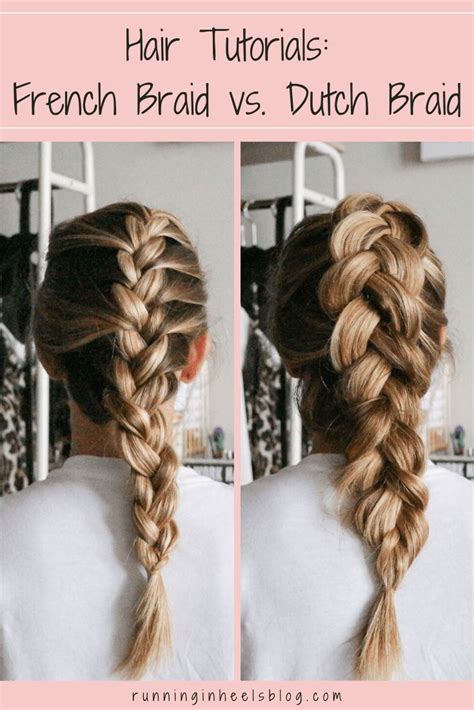Introduction

Braiding has been a staple in hair styling for centuries, with countless variations emerging throughout history. Two of the most popular and versatile braids are Dutch braids and French braids. While they share some similarities, these braids offer distinct looks and techniques, making them suitable for different occasions and hair types. This comprehensive guide dives into the intricate world of Dutch braids vs. French braids, providing a detailed analysis of their key differences, benefits, and step-by-step tutorials.
Section 1: Defining Dutch and French Braids
1.1 Dutch Braids
Dutch braids, also known as inside-out braids, involve crossing strands under one another instead of over. This creates a raised and intricate pattern that often resembles a crown or headband. Dutch braids are versatile, making them suitable for both casual and formal events.
1.2 French Braids
French braids, also known as outside-in braids, follow the opposite technique of Dutch braids. Strands are crossed over one another, resulting in a smooth and elegant braid that sits close to the scalp. French braids are commonly used in intricate updos and hair accessories.
Section 2: Key Differences Between Dutch and French Braids
2.1 Construction Technique
The primary difference between Dutch and French braids lies in their construction technique. Dutch braids are created by crossing strands under one another, while French braids involve crossing strands over one another.
2.2 Appearance
Dutch braids create a raised and voluminous effect, while French braids result in a smooth and sleek braid that sits closer to the scalp. The difference in construction technique also affects the braid’s texture; Dutch braids are typically more textured, while French braids are smoother.
2.3 Versatility
Both Dutch and French braids offer versatility, but each braid excels in different situations. Dutch braids are ideal for creating eye-catching headbands and large braids, while French braids are perfect for intricate updos and hair accessories.
Section 3: Benefits of Dutch and French Braids
3.1 Benefits of Dutch Braids
- Volume and Height: Dutch braids instantly add volume and height to the hair, making them a great choice for people with fine or flat hair.
- Versatility: Dutch braids can be worn in many styles, from casual everyday looks to elegant updos.
- Secure Hold: Dutch braids are tightly constructed, providing a secure hold that can last for hours or even days.
3.2 Benefits of French Braids
- Sleek and Elegant: French braids create a smooth and polished look that is perfect for formal events or special occasions.
- Scalp Comfort: French braids lay close to the scalp, preventing hair pulling and discomfort.
- Hair Growth: French braids can promote hair growth by keeping hair protected from tangles and breakage.
Section 4: Step-by-Step Tutorials
4.1 Dutch Braid Tutorial
- Brush your hair to remove any tangles.
- Divide your hair into three equal sections.
- Cross the left strand under the middle strand.
- Cross the right strand under the new middle strand (which is now the left strand).
- Continue repeating steps 3 and 4, always crossing under, until you reach the end of your hair.
- Secure the braid with an elastic band.
4.2 French Braid Tutorial
- Brush your hair to remove any tangles.
- Divide your hair into three equal sections.
- Cross the left strand over the middle strand.
- Cross the right strand over the new middle strand (which is now the right strand).
- Take a small section of hair from the right side of your head and add it to the right strand.
- Cross the new right strand over the middle strand.
- Repeat steps 5 and 6 with the left side of your hair.
- Continue repeating steps 6 and 7 until you reach the end of your hair.
- Secure the braid with an elastic band.
Section 5: Tips and Tricks
- Use a styling cream or mousse to make your hair more manageable and easier to braid.
- Start with damp hair to prevent breakage and tangles.
- Divide your hair into equal sections to create an even and consistent braid.
- Keep your hands close to your scalp as you braid to avoid pulling or stretching the hair.
- Use a small elastic band to secure the end of the braid to prevent it from unraveling.
Section 6: Common Mistakes to Avoid
- Over-tightening: While Dutch and French braids should be secure, avoid over-tightening them, as this can cause damage and scalp pain.
- **Braiding on Dry
